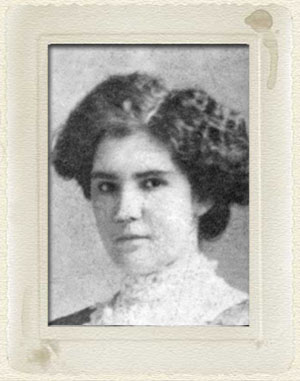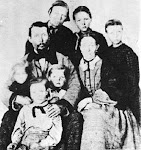2.04.2010
(42) THE UTAH WAR (or Echo Canyon War) 1857-1858, Mountain Meadow Massacre
The Walker War was barely over when in the fall and winter of 1857 an incident occurred which threatened the peace and progress, and even the lives of the Mormons, and also the very existence of the Church in the territory of Utah. It came to be known as the Utah War, or Echo Canyon War, or facetiously nicknamed “Buchanan’s Blunder.” It was basically a conflict between the Federal Government and the Church’s control of the territorial government of Utah. Zemira was an active participant in this war.
In that same year (in September) another incident, one of the darkest periods of Utah history occurred—that of the Mountain Meadow Massacre, a situation beyond mortal man’s comprehension. Zemira and his family were affected by both occurrences, indirectly in some ways, directly in others.
Much of the following information about the Utah War was taken from a thesis written by Robert Slack, as found in the book, Family Ties by Abram O. Young, 64 plus additional referenced information. It portrays the atmosphere surrounding the Church and the area in which our Palmer and Draper relatives were living at that particular time.
Going back a few years, it was in 1850 that Utah became an organized territory of the United States. This gave the U. S. government, who still wanted to control them, a way to do this. They sent men to Utah to fill offices of authority. In 1851, the first of many Gentile federal appointees began arriving in Utah, against the will and very much to the dissatisfaction of the Saints, as they proved to be poorly qualified, unprincipled, as well as prejudiced against the Mormon Church.
Also, following the discovery of gold in California in 1849, large numbers of gold seekers in increasing numbers began traveling through Utah en route to California. These factions brought non-Mormon citizens and Gentile influences to Utah. Also the establishment of commercial businesses created problems.
As the years went by, friction again developed between the Mormons and the non-Mormons. As it increased, some of these officials resigned from their offices and sent out reports to the government, making many accusations against the Mormons, some perhaps true, but many were false and very libelous, especially those of Judge Drummond.
Apparently President Buchanan came to believe that the Mormons in Utah were in rebellion and insurrection against the laws and authority of the United States. Without investigating the situation or communicating with Governor Brigham Young, as was customary in such cases, in 1857 Buchanan appointed Alfred Cummings to replace Brigham Young as governor of Utah. He then directed a military force, an army of 2,500 soldiers led by Albert Sydney Johnston, to maintain order and uphold the supremacy of the federal authority in the Territory of Utah.
In the spring of 1857, some Mormon men were traveling west to Utah. They caught up with Johnston’s Army, which was at that time also moving west. The soldiers were doing much talking about what they would do when they reached Utah. They proposed to hang the Mormon leaders and scatter the Saints, or run them out of the territory. These Mormon men hurried ahead to Utah and notified Governor Young of the approaching army, and of their intentions. The news reached him on July 24th and spread rapidly throughout Utah, and options were considered and decisions made.
President Young said, “The issue which has thus been forced upon us, compels us to resort to the great first law of self-preservation and stand in our own defense and right. Our duty to our country, our holy religion, our God, to freedom and liberty, requires that we shall not quietly stand still.”65 Their proclamation of intentions was: to forbid all armed forces from coming into Utah Territory on whatever pretense, “to hold all forces in Utah in readiness to repel any invasion, and to declare martial law in the territory.”
President Young ordered the Nauvoo Legion to prepare for invasion; every community to prepare for defense. He instructed bishops in the villages to prepare to burn homes and everything should hostilities actually break out. He ordered the building of fortifications and also selected raiding parties to harass the army and supply train. The instructions included every able Latter-day-Saint male, thus Zemira was included, and he did in fact take a very active part in this defense effort.
Another important factor affecting future events in Utah was that President Young ordered that no grain or other staple be sold to passing immigrants or speculators.
About this time an immigrant company composed of several families from Arkansas and a group of horsemen who called themselves the Missouri Wildcats made its way through central Utah on their way to the California gold fields. Some boasted about participating in the Haun’s Mill Massacre, the murder of Joe Smith, and other mob actions against the Mormons.
The Mormons, and the immigrants also, were having troubles with the Indians. Loss of human lives and the stealing of animals and continual harassment made their lives anything but peaceful. Also, the immigrants were unable to purchase the much-needed grain and other staples, which they expected to get in Utah. They became angry and finally tore down fences and turned their animals into the fields, which destroyed the crops.
These factors had a great bearing on the disastrous Mountain Meadow Massacre that occurred September 9, 1857, near Cedar City, where almost the entire company of immigrants was killed. It has been described by Robert Slack as “One of the blackest, most misunderstood, and most controversial chapters in Utah and Mormon history.”66
Also, at this time the United States army was approaching the area called South Pass in what is now Wyoming. In September Mormon General Daniel H. Wells of the Nauvoo Legion sent about 1,100 men east to Echo Canyon, which lay on the route through the mountains to Salt Lake City. These soldiers built walls and dug trenches, loosened huge boulders that could easily be sent crashing down on the moving columns, and they constructed ditches and dams to flood the enemy’s path. They were to obstruct and hinder their approach in every possible way, but to not take anyone’s life.
Forty-four “Mormon raiders,” a unit of the Nauvoo Legion under the direction of Major Lot Smith, went to eastern Utah— now western Wyoming—to harass the troops. They were instructed on “ascertaining the locality or route of the troops, proceed at once to annoy the troops in every possible way. Take no life. Use every exertion to . . . destroy their trains, and stampede or drive away their animals, at every opportunity.” 67
Here is a version of the raiders’ work: The raiders torched a total of seventy-four wagons, containing enough supplies to outfit the large army for three months. They captured fourteen hundred of the two thousand head of cattle. They burned the two key Mormon outposts, Fort Bridger and Fort Supply, which the government forces had expected to occupy. In November it took the army fifteen days to push 35 miles through storms and sub-zero weather to burned-out Fort Bridger. Approximately twenty-five hundred American soldiers and several hundred civilian officials spent a miserable winter in western Wyoming in a nearby community and a city of tents and improvised shelters of Camp Scott.68
64- Abram Young – Family Ties, p. 47 – Slack’s thesis, Mountain Meadows
65- Church History in the Fullness of Times, p. 370 - B. Young proclamation re. Johnston’s army
66- Abram Young – Family Ties, p. 47 – Robert Slack’s thesis, Mountain Meadows
67- Church History in the Fullness of Times, p. 373 – Mormon raiders, Echo Canyon
Subscribe to:
Post Comments (Atom)
Contributors

Lucile Brubaker (and her mother Lenna Cox Wilcock) are also contributing to this blog.






No comments:
Post a Comment